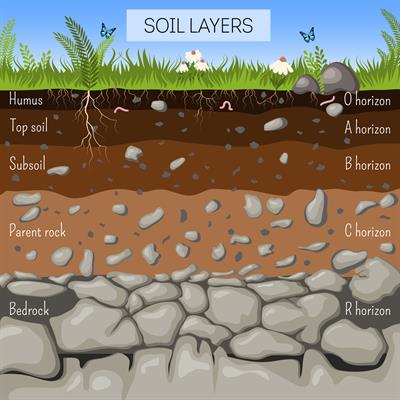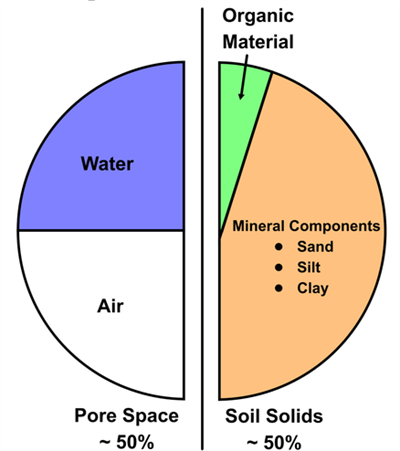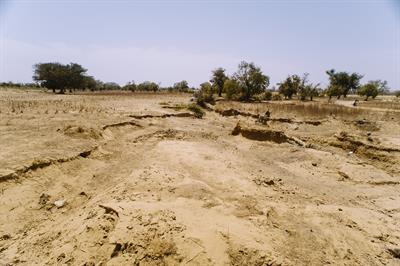
PUMPA - SMART LEARNING
எங்கள் ஆசிரியர்களுடன் 1-ஆன்-1 ஆலோசனை நேரத்தைப் பெறுங்கள். டாப்பர் ஆவதற்கு நாங்கள் பயிற்சி அளிப்போம்
Book Free DemoThe uppermost layer of the earth's crust is known as soil. The upper layer of soil is composed of humus (organic matter), mineral salts that support the growth of plants.

Layers of soil containing humus (topsoil)
The soil constitutes minerals like iron, potassium, magnesium, calcium, sulphur and inorganic salts like sulphates, phosphates, carbonates. It also contains organic matter such as humus and living organisms like bacteria, fungi, insects (ants and beetles), earthworms, rodents and plant roots. The soil also acts as a habitat for animals.

Components of soil
So now arises a question. What happens when external agents remove the soil? What is the phenomenon called?
What is soil erosion?
Removal of the upper layer of soil (fertile topsoil) by wind and water is called soil erosion.
It results in a significant loss of humus and nutrients a decrease in soil fertility. Since soil erosion takes away the fertile layer of soil, this makes the soil infertile and unsuitable for plant growth. Soil erosion is more severe in little or no surface vegetation such as barren lands or deserts.
Soil erosion is a continuous process that can occur slowly or at an alarming rate. It results in topsoil erosion, ecological deterioration, and soil collapse etc.

Soil erosion
Effects of soil erosion:
- Loss of arable land
- Desertification
- Pollution of air
- Clogging of waterways
- Destruction of infrastructure
Reference:
https://commons.wikimedia.org/wiki/File:Components_of_Soil_Pie_Chart.png
https://www.flickr.com/photos/cifor/35488663850/in/photostream/